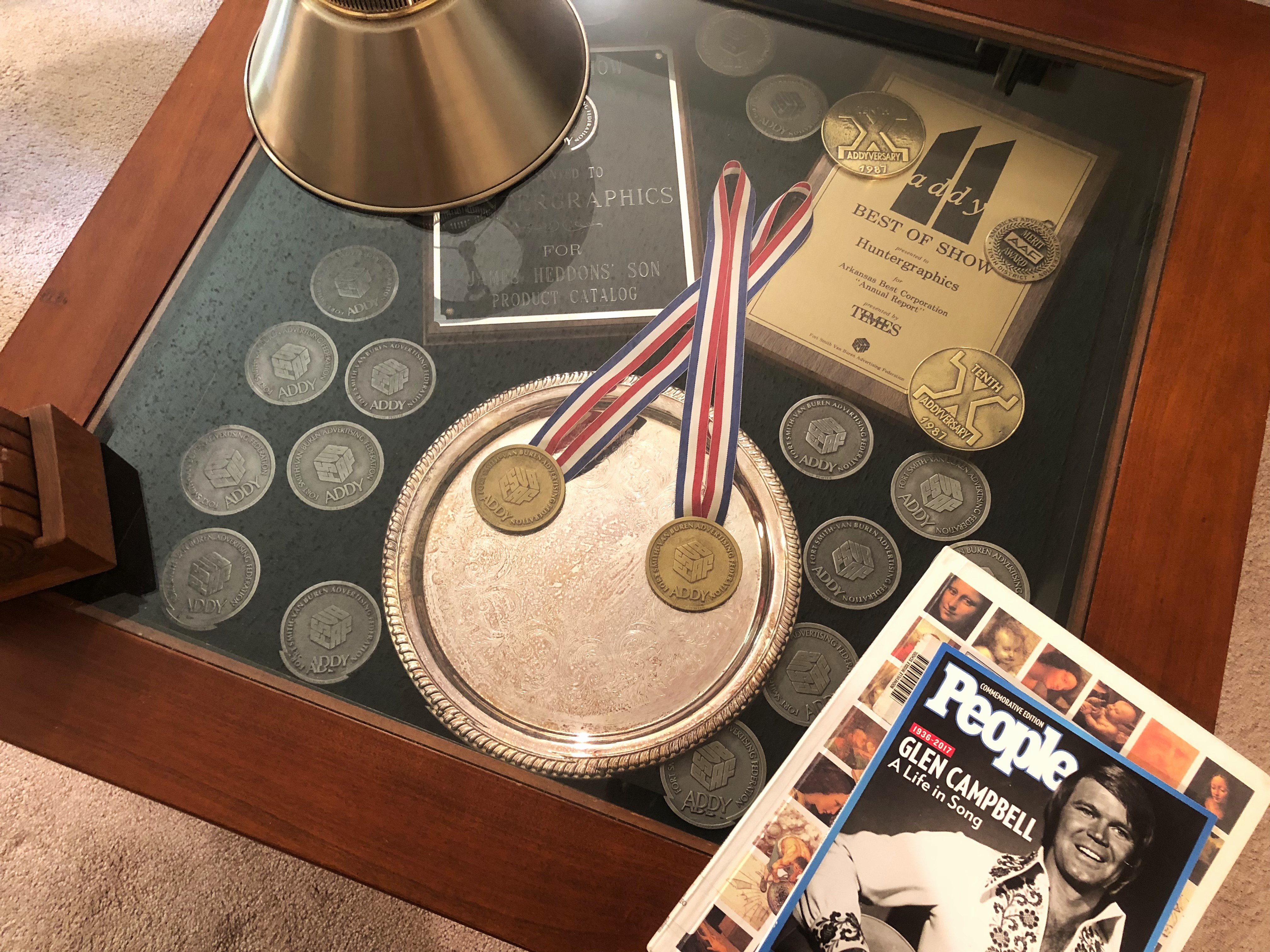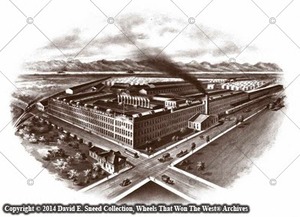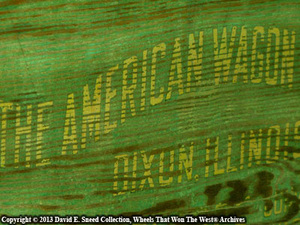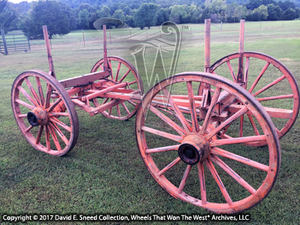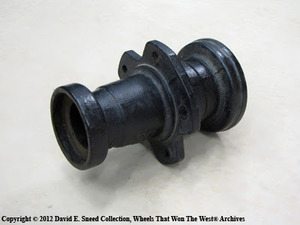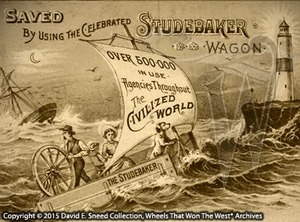I’m at that age where my life travels now have some length to ‘em. Looking back, it’s interesting to see how the dots have connected so many areas of interest. The subjects of art, history, writing, photography, antiques, Americana, ranching, horses, and a whole slew of creative endeavors have permeated every part of my job and passions. It’s a union that helps me better appreciate the people, places, and things I regularly experience. With that as a lead-in, I wanted to share a little about how art is not only an integral part of life but a huge part of the story of early wagons and coaches.
My first memory related to artwork is of my dad and I sitting at the kitchen table, painting bright blue hair on a caricature in a coloring book. It seemed funny in the moment but, these days, I see it fairly often on real people. Maybe we were ahead of our time! While my drawing skills never progressed beyond those of stick figures, I’ve always had great respect for folks who could transform a blank canvas into beautiful renditions of almost anything. My wife’s dad, Ed Hunter, is one of those people. He’s an artist’s artist and even took cartooning courses under Charles Schultz (of Peanuts cartoon fame). As a kid, Ed was always drawing, knowing he wanted a different life than the farming directions of his family. In his teens, he took a job as a sign painter’s apprentice. Those were the days when billboards, logos, and shop windows were hand painted and fragile flakes of gold leaf and colorful flourishes were applied as embellishment. Striping was an art form and the miracles of modern photoshop, artificial intelligence, and other digital tools were still nearly three-quarters of a century away. Talent couldn’t be faked by leaning on technology. Ed eventually grew his God-given gifts to a point where his appetite for art morphed into an award-winning ad agency and then, fine art. Many of his western art pieces have been purchased by collectors or are hanging in museums. It’s a tribute to the value of tenacity when pursuing dreams.
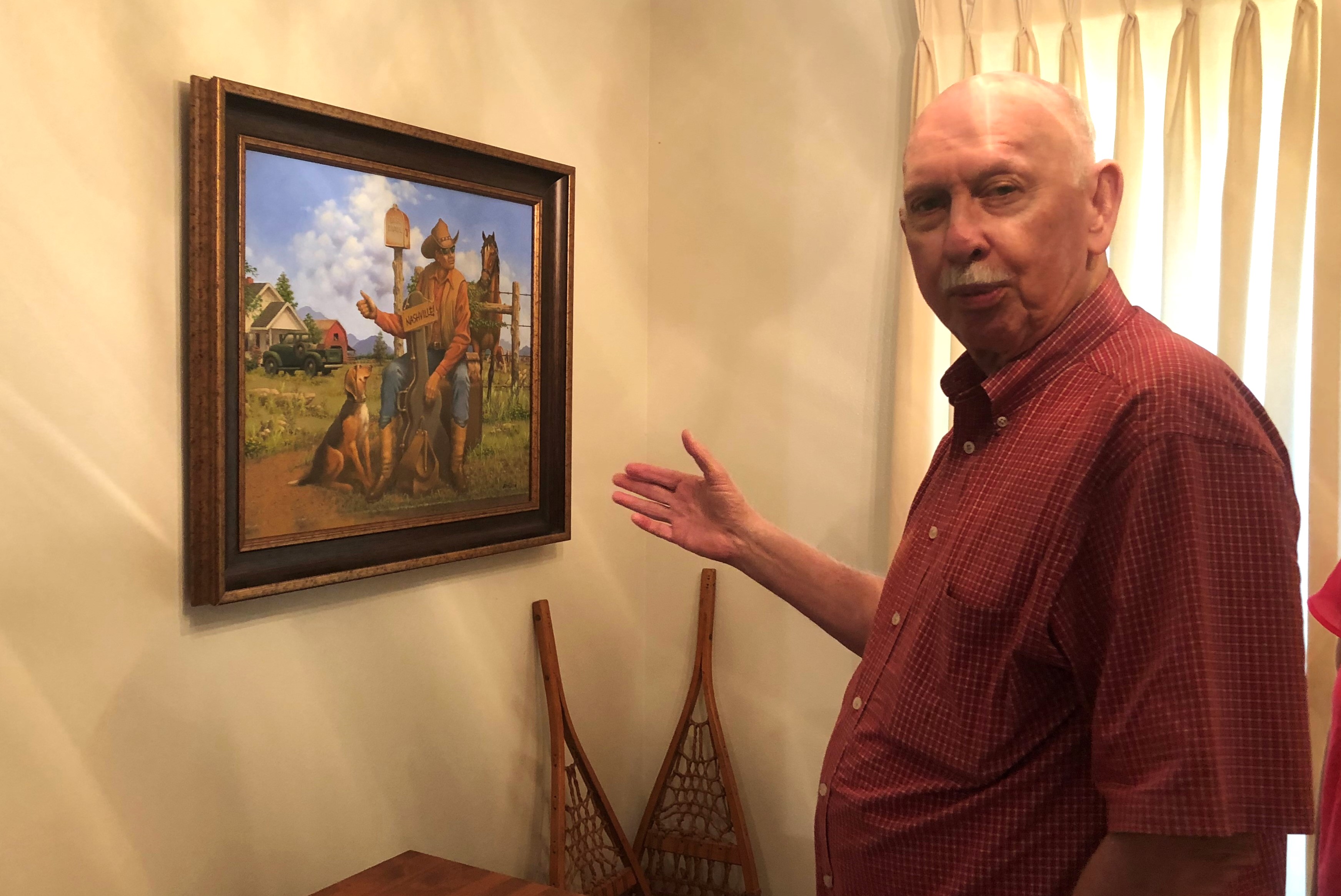
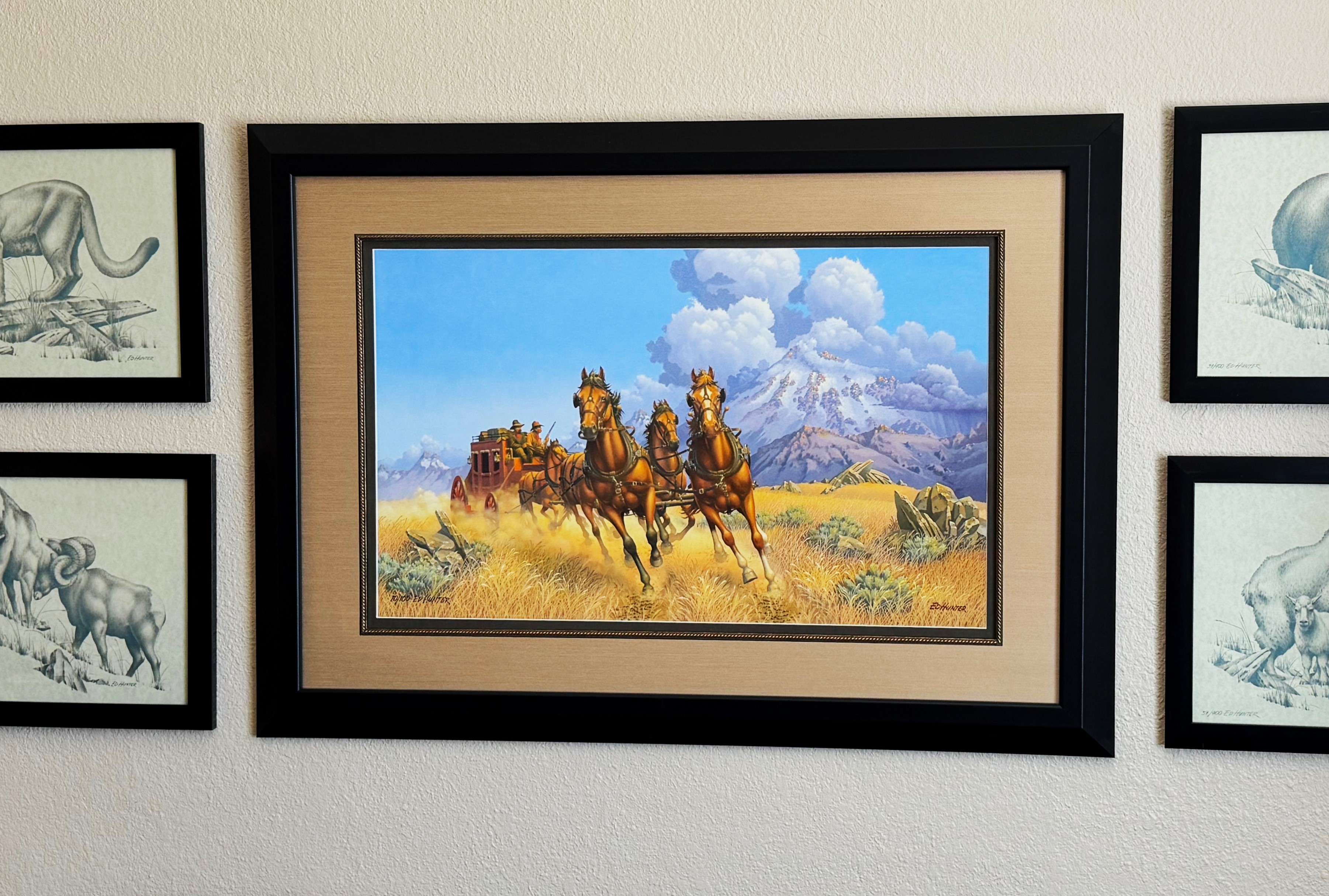
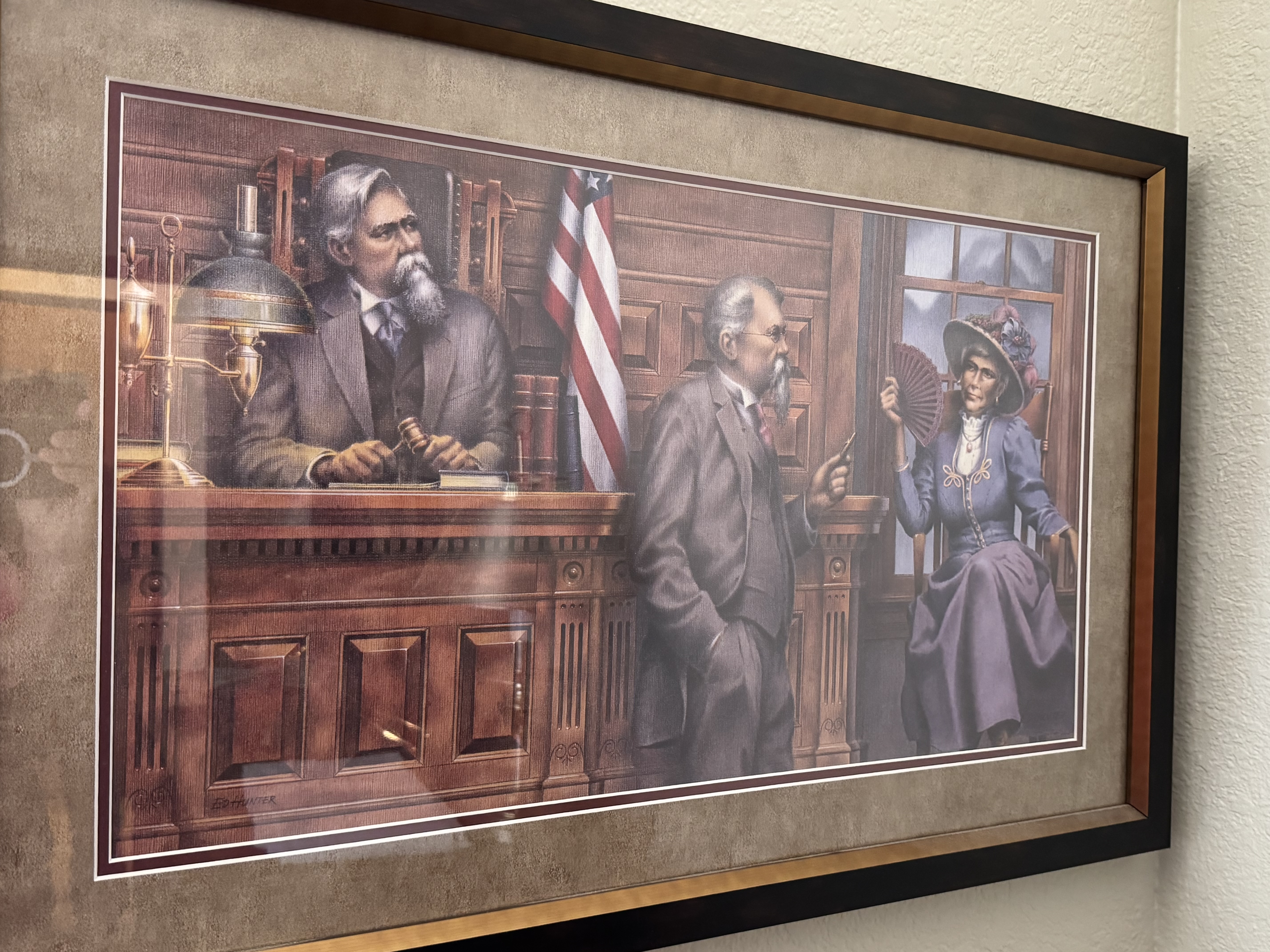
Ed Hunter's western-themed paintings include subjects related to Navajo life, stagecoaching, picturesque western and patriotic landscapes, as well as a number of scenes depicting life events from 'Hanging Judge' Isaac Parker. Above is a scene from Parker's courtroom with Belle Starr on the witness stand.
Not long ago, I had the chance to interview another creative who some of you may know. Wayne Troyer is not only an accomplished artist but came about his craft in a similar way as my father-in-law. A fair amount of his expertise can be seen in projects produced by Hansen Wheel & Wagon Shop. I stopped by the Letcher, South Dakota works not long ago and was privileged to spend some time with Wayne. (By the way, every time I stop, I’m amazed at what’s going on there and every time I leave, I find myself wishing I could stay longer). On this trip, Wayne was working on the striping and lettering of an original, light hitch wagon that Doug Hansen and his team had restored.
As I spoke, Wayne’s eyes never left the side of the wagon. Free-handed, he fluidly and perfectly shaped the ornamentation, punctuating the personality of the piece. Pulling the tip of the brush to the end of the elongated contours, he opened up about his upbringing in an Amish family. Wayne grew up with seven siblings and remembers ‘always’ drawing even before he was old enough to attend school. He was the only one that picked up the art gene which he credits to his father. According to Wayne, his dad had a building center and was always drafting layouts for cabinetry designs and other construction projects. As he matured, Wayne started painting signage for the showroom of the family business. Over time, he transitioned to decorating extensive amounts of furniture.The breadth of experience and his signature attention to detail soon ensured that his talents were noticed outside of the sign and furniture trades. His next ventures involved the striping and adornment of vehicles in the shops of both Woodlyn Coach and A & D Buggy. After 43 years in the business, he’s learned a lot and may be the most experienced and sought-after artisan of wood-wheeled vehicles today. It’s a multi-faceted craft he thoroughly enjoys, from the initial evaluation of a vehicle to the process of designing and measuring and, ultimately, the application of the elaborate lettering, striping, and other embellishments.
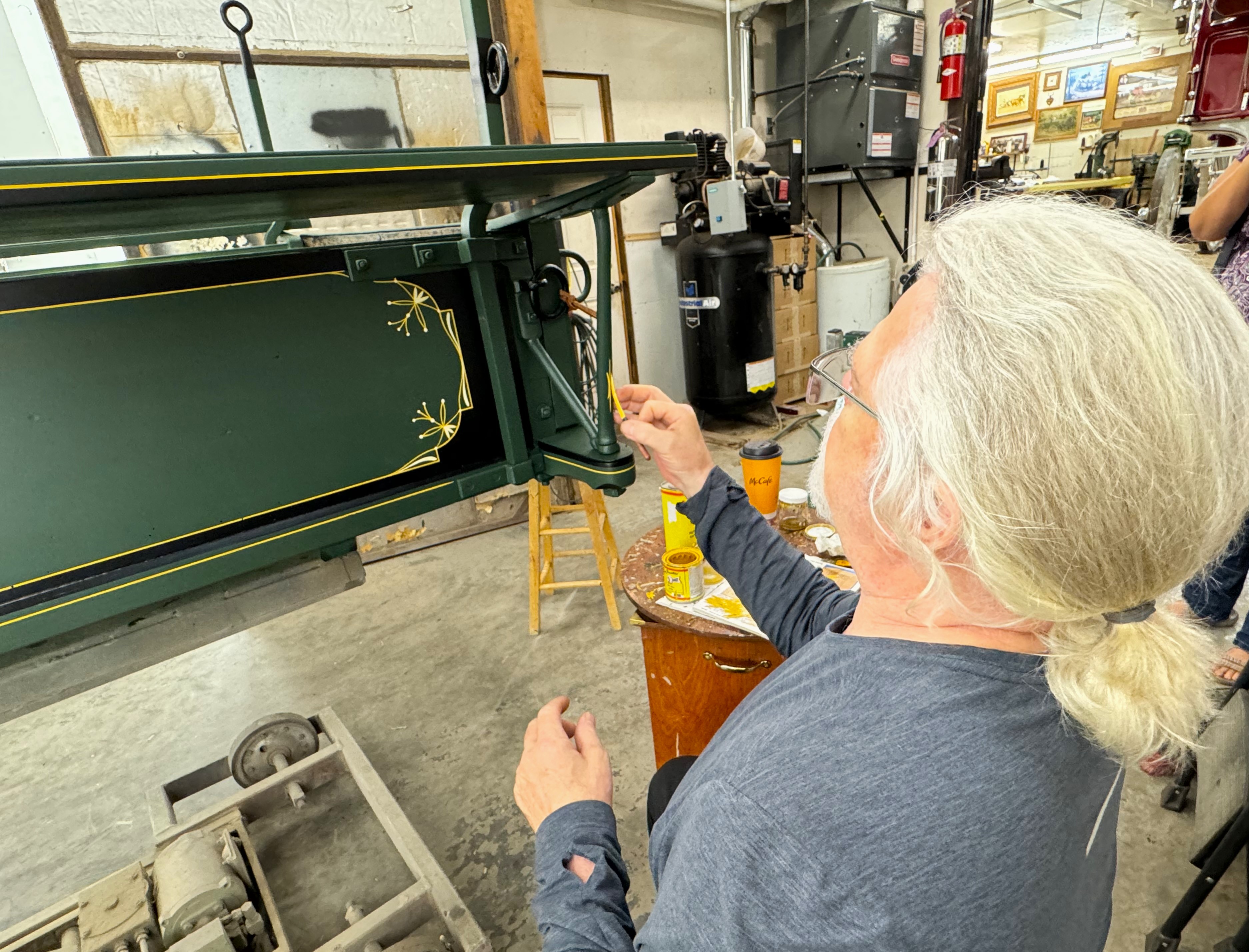
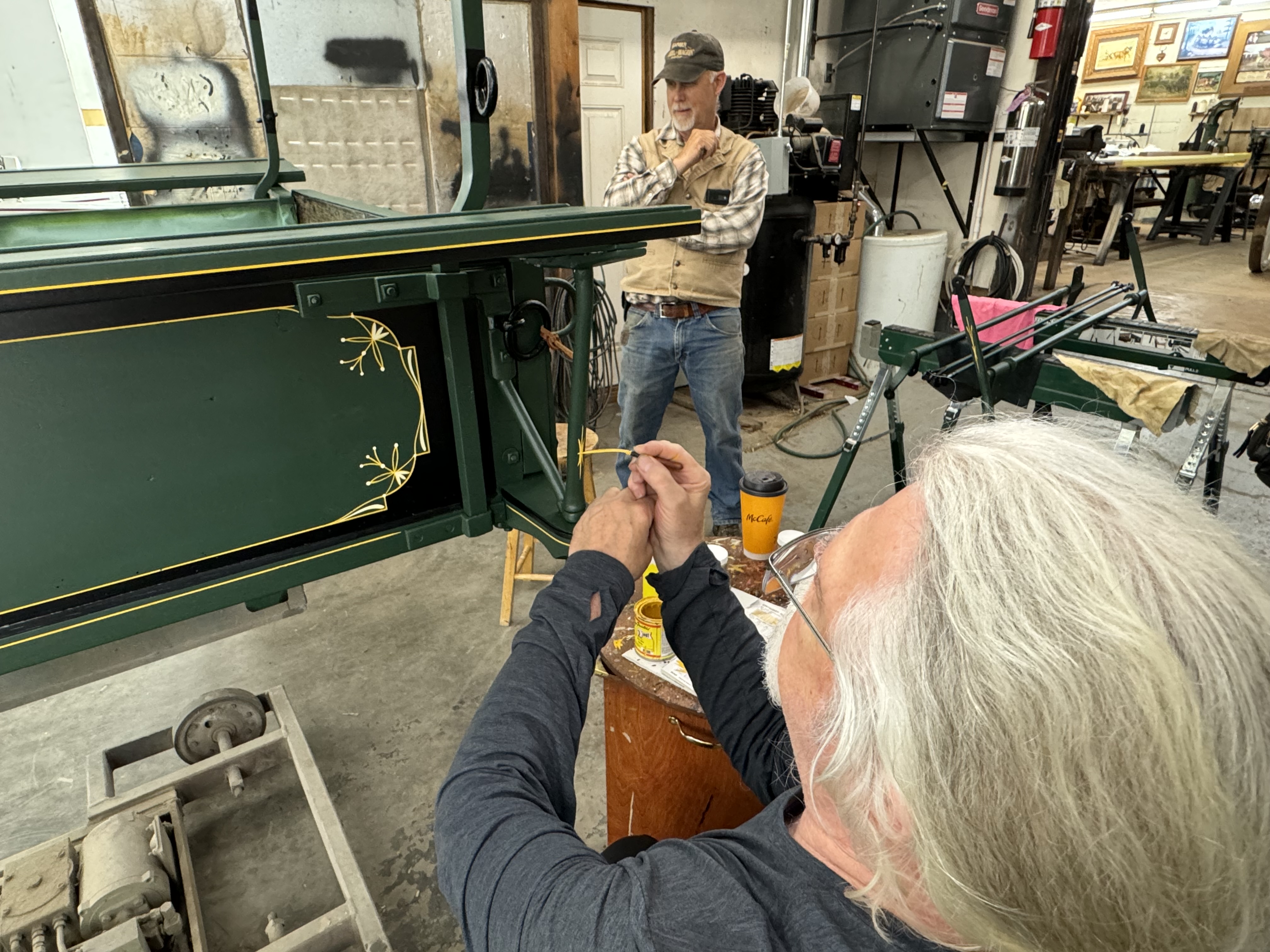
Wayne Troyer's art is reminiscent of the master craftsmanship in America's first transportation industry.
Some of Wayne’s favorite vehicles are the antique stagecoaches and fire equipment due to the scrollwork and gilded decoration. He praised the old world craftsmanship, pointing out that the painted artwork was designed to make a statement. He reminds us that the early makers of transportation were trained to carry a theme that balanced the entire vehicle. It’s a thought that’s easy to see in the intricacies of wood and metal contours. Not only are the myriads of chamfers, shapes, and lines formed to be stylish but they actually help the artist when decorating the vehicle. Start to finish, it’s a tremendous amount of work that crowns an aesthetically pleasing and personal piece.
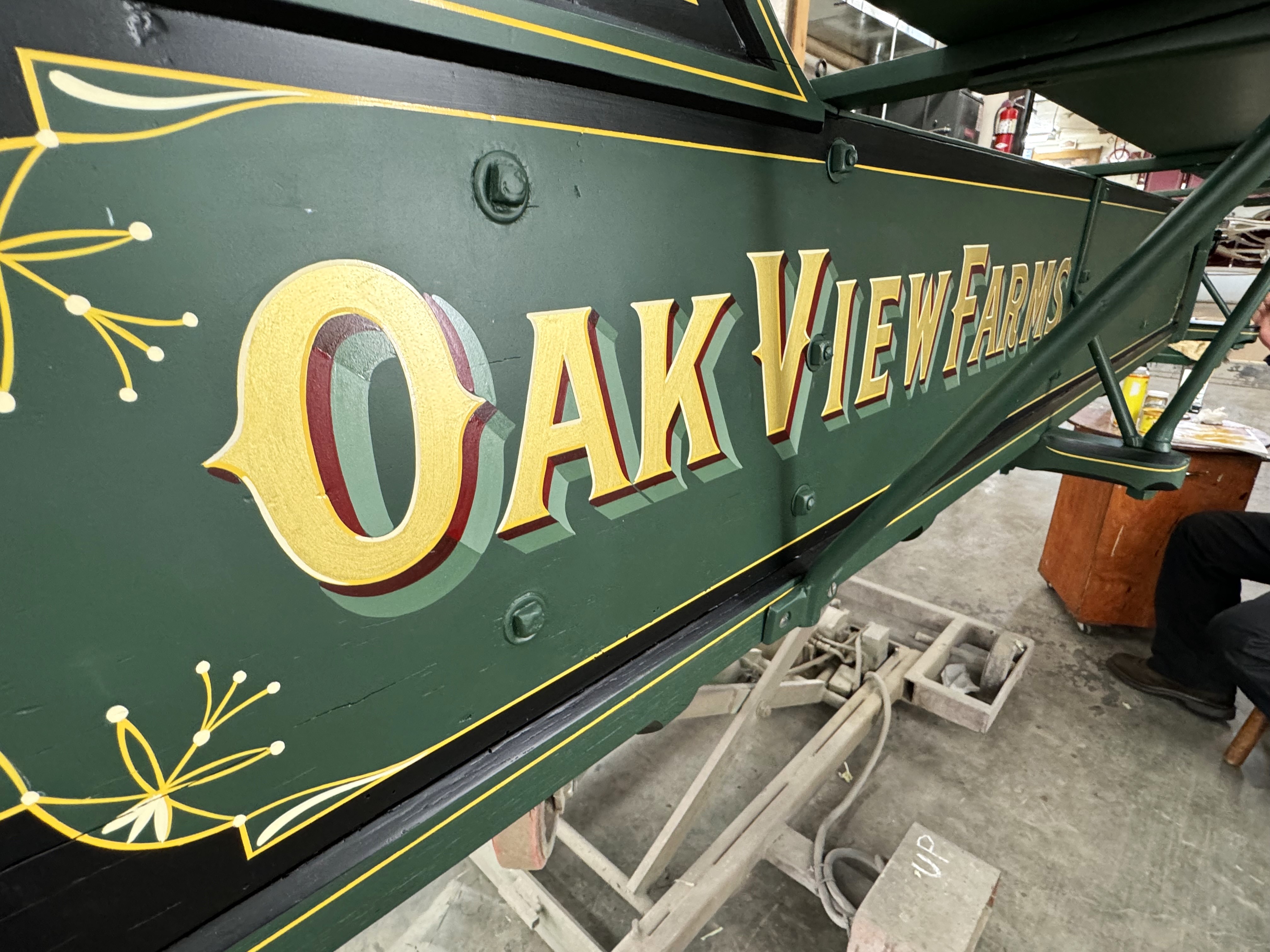
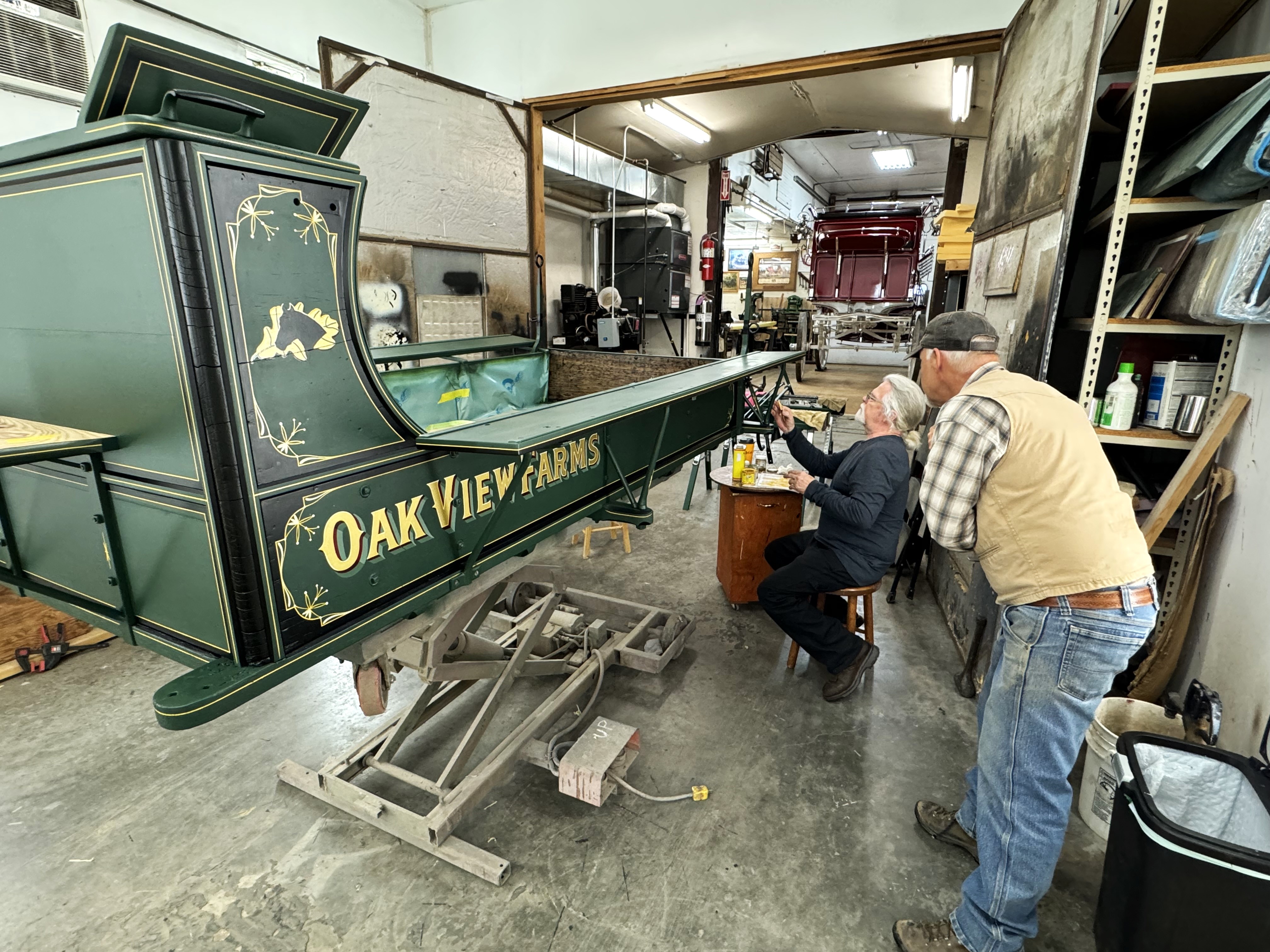
Doug Hansen watches as Wayne Troyer puts the finishing striping touches on an original body.
From brand to design, the treatment of a set of wheels as a social, style, or business statement continues today. However, well before the automobile came along and before wagons and other wood-wheeled workhorses were restricted to a bare-bones, utility status, we can see how the horse-drawn industry set the bar within engineering, elegance, and artistry. It’s a statement with plenty of facts to back it up. Early trade publications are packed with dissertations on the math, science, engineering, and design aspects of these rolling works. The topics are deep and overwhelmingly display an intense commitment to these crafts. Other proofs include the wealth of innovations, patents, and discoveries attributed to these early builders. In truth, to fully appreciate the knowledge and skillsets of nineteenth century vehicle builders, all we need to do is look at the original pieces. Icons like the legendary Concord Coach or any number of other specialized machines offer a unique insight into the intricacies of tailored design. Incredibly, many of the earliest farm wagons were also embellished with stylized contours, head-turning flourishes, and even the same types of murals as stagecoaches.
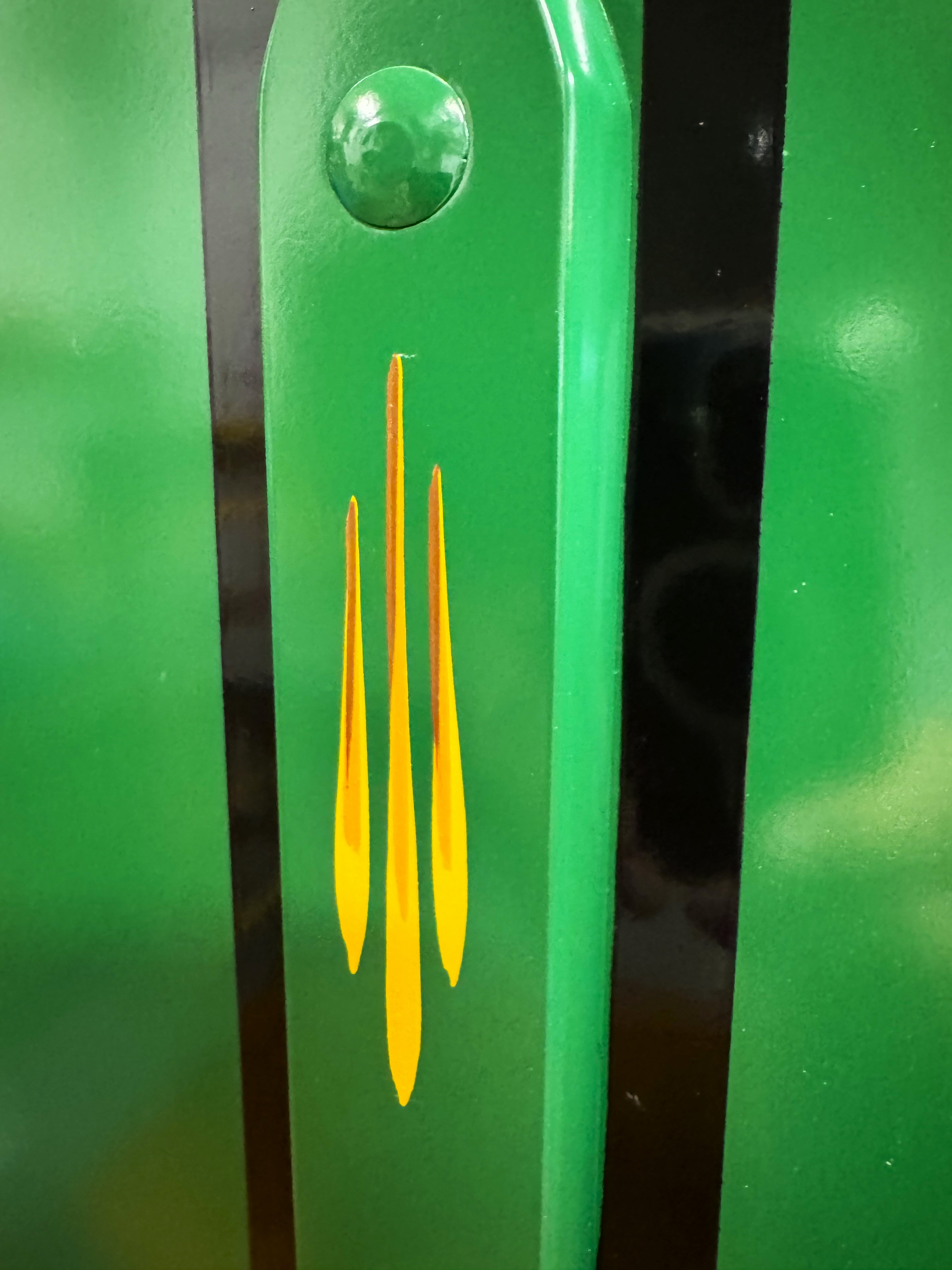
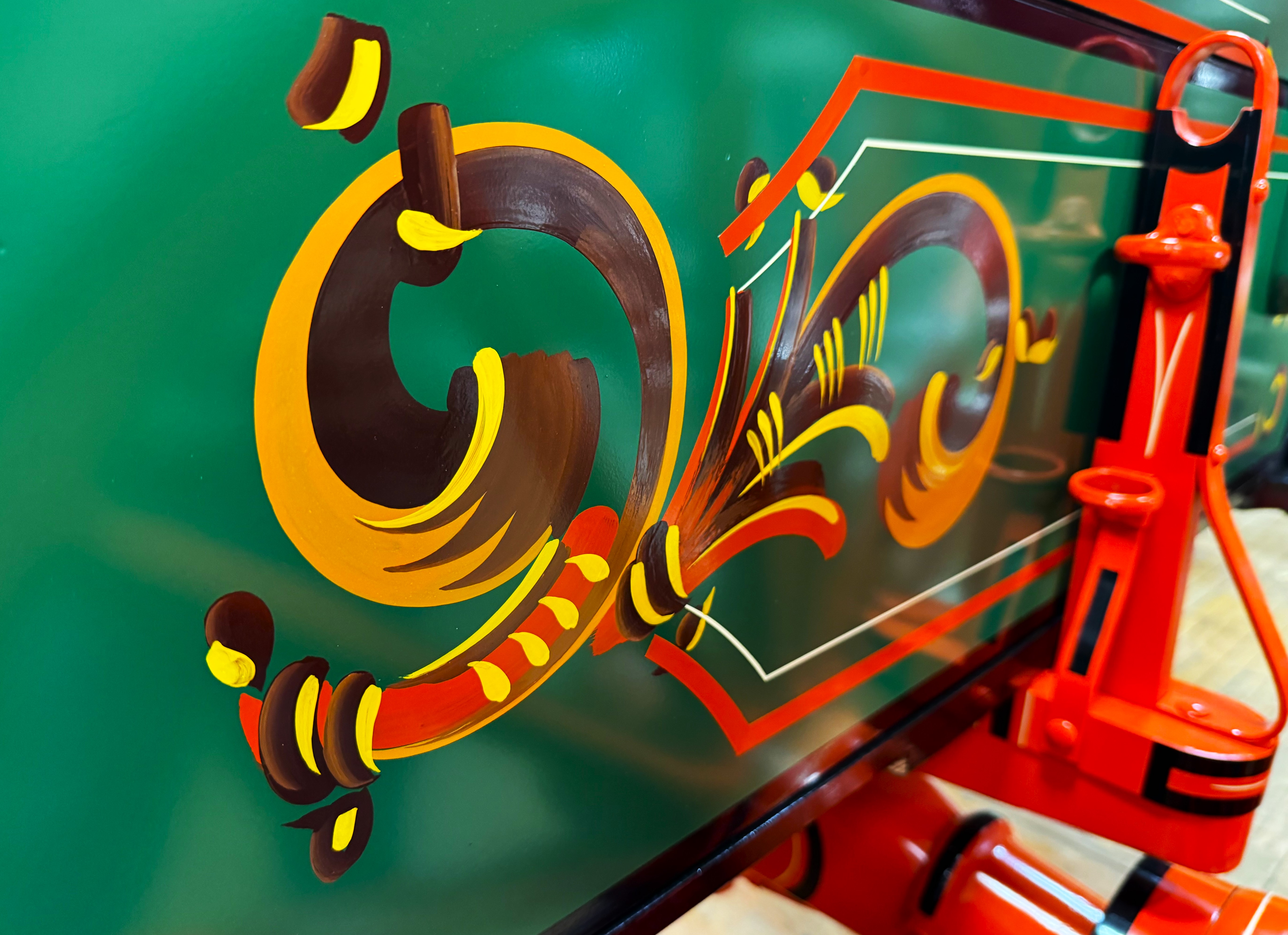
Immediately above are two images from portions of an early Stoughton wagon. This particular wagon was restored by Doug Hansen’s team with the brand’s signature artwork recreated by Wayne Troyer.
Today, the glitz and glamour for most motorized rides are accomplished with cheapened chrome strips, plastic-lettered logos, and light-weight veneers. Missing are the personal, handcrafted details we’ve come to expect in nineteenth century vehicles. We even see it in the earlier advertising. Yet, thanks to those committed to carrying the torch of true design creativity, it’s possible to still experience the old school rewards of Artistry On Wheels.
